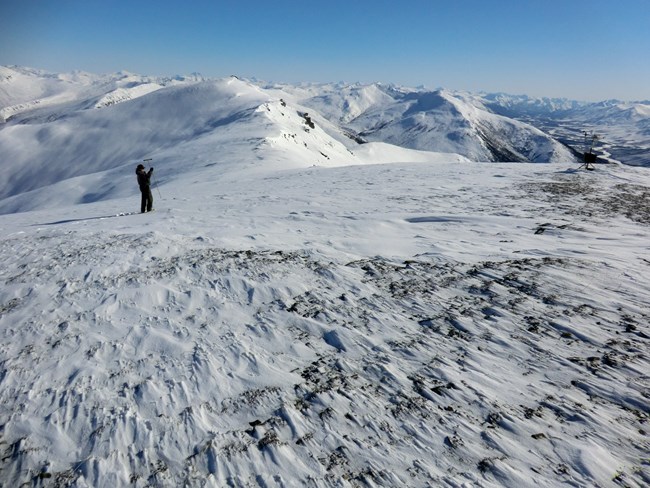
Ken Hill
Snowpack is an important component of Arctic ecosystems. Seasonal snow, river and lake ice, and long-term glacial ice are dominant ecosystem influences in Arctic parklands. Snow affects landscape vegetation patterns, drainage patterns, nutrient cycling, water quality, productivity of plants and animals, the degree and types of disturbance events, the timing of migratory and breeding events of organisms, predator-prey relationships, and the distribution of plants and animals. The formation, thickness, and break up of river and lake ice are also key indicators of regional climate and they exert dominant controls on aquatic productivity and aquatic ecosystem dynamics. In some areas of Gates of the Arctic National Park and Preserve, changes in glacier ice influence terrestrial ecosystems, through changes in glacier area and local microclimate, and stream ecosystems through the timing and flux of freshwater and sediments. Snow and river and lake ice are seasonal features that provide integrative information on the duration and severity of winter. Glaciers as persistent landscape features provide information of the decadal-scale climate trends. Comprehensively, measurements of these snow and ice features give us information on intra and inter-annual climate trends that cannot be acquired through weather stations alone.
We monitor seasonal snow, seasonal river and lake ice, seasonal to inter-annual aufeis (a sheet-like mass of layered ice that forms from successive flows of groundwater during freezing temperatures, and persistent glacial ice) across Arctic parklands.
Contact: Pam Sousanes
-
Aufeis in Alaska's Arctic Parks
Aufeis is a thick accumulation of ice on the ground surface. Also known as "icing," aufeis forms by the overflow and freezing of water during the winter. Aufeis is common in the national parks of Arctic and Interior Alaska.
- Duration:
- 59 seconds
Last updated: July 6, 2023

